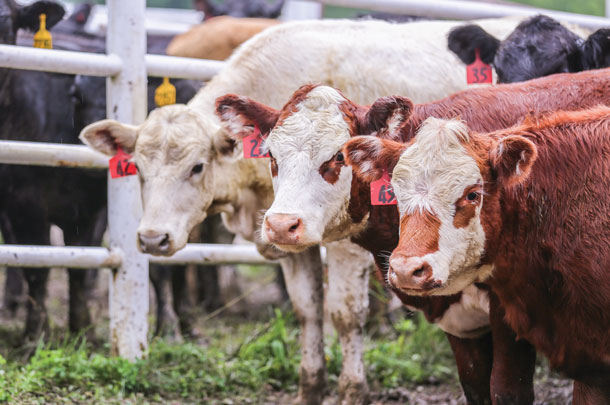Bovine respiratory disease complex, or basic pneumonia in calves, is known as shipping fever. Shipping fever is a prevalent dilemma that has taken a turn for the worse in recent years. Dr. Matthew Duffy of Duffy Veterinary Services has been a practicing veterinarian in the Oklahoma Panhandle for over 20 years.
“Twenty years ago, we were spending $12 to $15 per head on mass treatments and initial costs, and now we’re spending more like $40 to $45 per head. An average death loss 20 years ago was probably in that 2 percent range, and now we’re running about 5 to 5.5 percent,” Duffy says. “We’re spending a heck of a lot more money on antibiotics and vaccines, and we still have twice the death loss and doctoring rates. It’s the opposite of what one would anticipate.”
Duffy spends most of his time in grow yards and feedyards, two areas continuously plagued with shipping fever. He regularly sees shipping fever and tries his hardest to educate his clients and the public on prevention methods over treatment.

“I absolutely do not believe there is any way to get rid of shipping fever; it’s something we manage,” Duffy says. “We’re always going to be doctoring sick calves; it’s a high-stress deal.”
Duffy goes on to say shipping fever is something that can be prevented by both cattle producers and veterinarians if the right combination of methods is applied correctly.
The prevention of shipping fever
There are three key factors: nutrition, vaccination and basic husbandry.
Duffy emphasizes having a good nutritional and mineral plan in place is a key element in preventing shipping fever.
“I’ve found over time a lot of people don’t even have a good mineral program,” Duffy says. “The concept everyone has is ‘Well, I put out a red block, and I put out a white block, and I put out a yellow block, and that’s what my cows lick on’ – well, that doesn’t cut it. At any rate, they need a good, solid, loose mineral program where those cows can really build up their immune system.”
After you have developed a solid nutritional plan, vaccination is the next move.
“What producers can do on their end is get two rounds of modified-live in their calves prior to shipping. It helps us out considerably,” Duffy says.
Duffy says kill vaccines on origin don’t offer much help and using modified-live vaccines prior to weaning or shipping is a strong method to preventing shipping fever. Duffy also touches on the subject of keeping a good record of your herd.
“The vast majority of the cattle we get in here are bought one to five at a time through these little sale barns, and we have no history on them, and most of them have never seen a vaccine before,” Duffy says.
Advice for producers
As far as advice goes, Duffy provides some helpful and doable tips for small- and large-scale cattle producers.
Duffy says talking to your local veterinarian and building a nutritional and vaccination program can help tremendously.
“It would be great if veterinarians and producers could get together, get where their calves are vaccinated correctly and signed off and certified on those vaccines. You can sell in the sale barn as certified for having those vaccines and turn a larger profit,” Duffy says.
Duffy says integrating proven prevention methods pays off more in the long run. “By the time some producers wean that calf off, they just want the calf gone and to get paid. If we could just get them to do a few extra things prior to weaning, they could be paid handsomely for doing so, and we could make larger loads that will do better and have less sickness whenever they get here.”
What you need to remember
Duffy summarizes his tips: “Basically, just have some sort of nutritional program, mineral program and be able to talk with your local veterinarian if at all possible. They will always guide you in the right direction. Also, if producers could be using modified-live vaccines before they get weaned, that helps us out a ton, and we would get along better.”
All in all, shipping fever is a major issue that has gotten drastically worse over decades. With new medical and technological advances, one would think cases of shipping fever would have gone down in recent years, but that is not the case.
By spending a little more time, money and effort toward integrating prevention methods, producers can reduce the risk of shipping fever before passing a member of their herd along to the next guy and creating a stronger, more trustworthy industry altogether. ![]()
PHOTO 1: In addition to administering your vaccines, you need to keep reliable records on what has been administered to calves.
PHOTO 2: Producers should take extra steps prior to weaning to help build the immunity for shipping. Staff photos.
Mayzie Purviance is a freelancer living in College Station, Texas.







